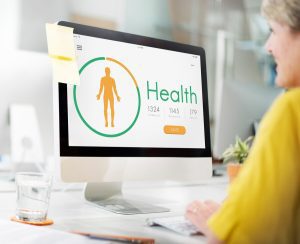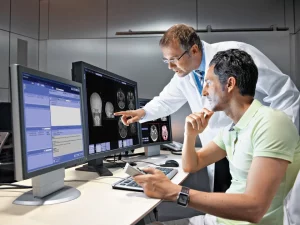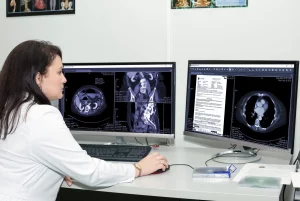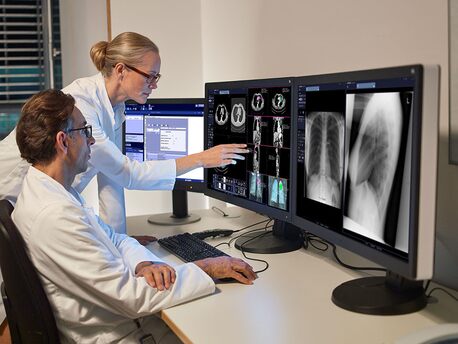Health information technology (Health IT) has become a key component of contemporary healthcare in a time when digital innovation propels sectors forward. The term “health IT” describes the application of information technology to improve medical services, manage patient data, and assist healthcare providers in providing effective, patient-centered care. Although its roots date back to the
Health information technology (Health IT) has become a key component of contemporary healthcare in a time when digital innovation propels sectors forward. The term “health IT” describes the application of information technology to improve medical services, manage patient data, and assist healthcare providers in providing effective, patient-centered care.
Although its roots date back to the early 2000s, government programs like those put in place by Presidents George W. Bush and Barack Obama gave health information technology (IT) a major boost by providing incentives for hospitals to implement electronic health records (EHRs). Health IT now includes a variety of digital tools and systems that lower costs, improve patient care, decrease errors, and streamline operations.
Important Elements of Health IT
The components that make up the health IT infrastructure each have distinct functions in aiding in the management of patient data, promoting communication, and improving the provision of healthcare.
EHRs, or Electronic Health Records

Image by Freepik.com
EHRs are essential to health information technology because they offer a thorough digital record of a patient’s medical history that is accessible from any location. EHRs make it simpler to coordinate patient care because they are available to authorized physicians, unlike traditional paper records.
Records of Personal Health (PHRs)
PHRs provide people more control over their healthcare journey by enabling them to manage their health information and encouraging patient involvement. PHRs offer a useful link between patients and healthcare professionals, despite being less comprehensive than EHRs.
Exchange of Health Information (HIE)
Organizations who have made a commitment to interoperability can share healthcare data more easily thanks to HIEs. Healthcare providers can access patient data from several systems through HIEs, guaranteeing continuity and all-encompassing care among different healthcare providers.
Benefits of Health IT
Health IT provides tangible benefits that improve the quality and efficiency of healthcare delivery.
Improved Communication and Data Sharing
Health IT solutions make it simple for healthcare professionals to share data, guaranteeing that patient information is available wherever it is needed. This results in quicker, more precise diagnosis by lowering the possibility of redundant testing or incompatible therapies.
Efficiency and Cost Savings
Healthcare workers may concentrate on patient care rather than paperwork thanks to automated procedures and the digitization of medical information. Providers may obtain information more rapidly with EHRs, which lowers wait times and raises patient satisfaction.
Enhanced Patient Safety and Care Quality

Image by Yandex.com
Health IT improves treatment outcomes and lowers the risk of medical errors by providing easy access to patient history and streamlining communication. For example, EHRs’ automated warnings inform clinicians of possible drug interactions or allergies, resulting in safer treatment regimens.
Empowerment and Engagement of Patients
Patients may contact with clinicians, schedule appointments, view their health information, and even get test results online thanks to patient portals and PHRs. This openness increases patient satisfaction and encourages their participation in healthcare decisions.
Data Analytics’ Function in Health IT
By empowering physicians to use big data to enhance patient outcomes and optimize operations, data analytics has revolutionized the healthcare industry. For example, data analytics in population health management (PHM) enables preventive intervention and lowers healthcare costs by identifying trends in chronic diseases.
Example: Using Data Analytics to Manage Chronic Illnesses

Image by Yandex.com
Healthcare professionals can monitor patients who are at high risk of conditions like diabetes or hypertension by using predictive analytics. Healthcare professionals can save expensive ER visits and hospital stays by focusing interventions on these patients. Analytics also aid in determining the efficacy of therapies, enabling healthcare professionals to modify their methods based on facts rather than conjecture.
Success Stories & Case Studies from Real Life
Real-world examples of how digital transformation has improved patient outcomes and healthcare delivery demonstrate the influence of health IT.
Rural Telemedicine
Patients frequently have restricted access to healthcare in rural and isolated places. Health IT-enabled telemedicine fills this gap by enabling video calls between patients and physicians. For example, the Veterans Health Administration (VHA) has effectively employed telemedicine to offer veterans remote mental health assistance. Veterans who would otherwise find it difficult to get care have had better mental health results as a result of this strategy.
Using EHRs to Reduce Medical Errors
Clinical alerts and decision support tools were integrated into a complete EHR system that was implemented by the University of Pittsburgh Medical Center (UPMC). By automatically checking for drug interactions and allergies before writing prescriptions, the system decreased medication mistakes. This decreased adverse medication responses, demonstrating the substantial improvement in patient safety that EHRs can bring.
PACS and VNAs in Radiology

Image by Yandex.com
Radiology departments traditionally managed medical images in isolation. With Picture Archiving and Communication Systems (PACS) and Vendor-Neutral Archives (VNAs), radiology images are now accessible to various healthcare departments. A large-scale hospital in Texas implemented a VNA system to centralize imaging across cardiology, neurology, and radiology, improving diagnostic accuracy and reducing imaging redundancy.
Challenges and Obstacles in Health IT
Despite its benefits, Health IT faces notable challenges.
Interoperability Issues
A lack of standardized data-sharing practices hinders seamless communication across Health IT systems. Although Health Level Seven (HL7) has introduced the Fast Health Interoperability Resources (FHIR) standard, full interoperability remains a work in progress.
Cybersecurity and Data Privacy Concerns
With sensitive patient information stored digitally, healthcare organizations are prime targets for cyberattacks. Ensuring data security is challenging, especially given recent ransomware attacks in the healthcare sector. In 2017, the WannaCry ransomware attack highlighted vulnerabilities in hospital IT systems worldwide, emphasizing the need for robust cybersecurity measures.
Information Blocking by Vendors
Some vendors or providers deliberately restrict access to patient information to maintain control over data within their systems. Known as information blocking, this practice disrupts continuity of care and patient data access. Health regulators have expressed a firm stance against information blocking, introducing penalties for organizations that engage in this behavior.
Future Trends and Emerging Technologies in Health IT

Picture by: Yandex.com
The future of Health IT is marked by innovation, with new technologies driving better patient outcomes and transforming healthcare delivery.
Blockchain for Enhanced Data Security
Blockchain technology promises to improve data security in Health IT by creating an immutable record of patient data. This innovation allows patients to control who accesses their data, ensuring transparency and security. For example, Estonia has implemented blockchain in its national EHR system, securing citizens’ health data and providing a model for other nations.
Telemedicine and Mobile Health Integration
As mobile health (mHealth) apps become mainstream, telemedicine’s role continues to expand. Patients now have access to mobile platforms that connect them with providers, track their health data, and receive reminders about medications or appointments. These apps cater to patients who prefer managing their healthcare digitally, enhancing accessibility and convenience.
AI and Predictive Analytics
AI is expected to enhance Health IT through predictive analytics, particularly in diagnostics and treatment planning. AI algorithms analyze vast amounts of health data to predict disease risks and recommend tailored treatment plans. Although still evolving, AI is already being tested in diagnostic imaging, where it assists radiologists in detecting anomalies more quickly and accurately.
Last Remark
With significant advantages in patient safety, data accessibility, and healthcare efficiency, health IT is a force that is revolutionizing the healthcare industry. Health IT has changed how people engage with healthcare services and how clinicians provide care by integrating digital records, patient portals, data analytics, and developing technology. Even if issues like cybersecurity and interoperability still exist, new developments point to a time when health IT will be even more advantageous, safe, and integrated.
In order for people to actively manage and monitor their health data, make educated decisions, and receive individualized care, health IT must embrace patient-centric approaches. The healthcare industry is changing along with health IT, with digital tools filling accessibility gaps and enhancing patient outcomes globally.






















